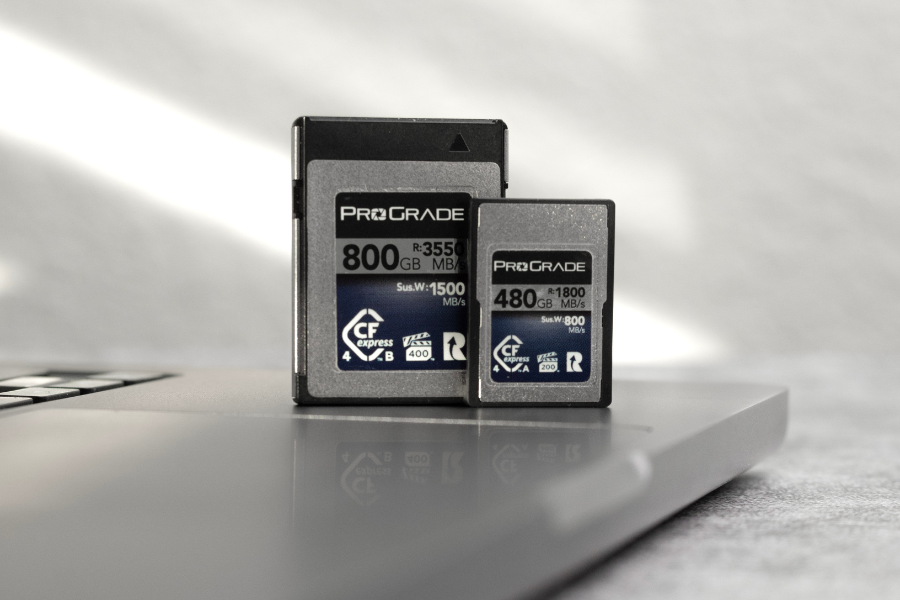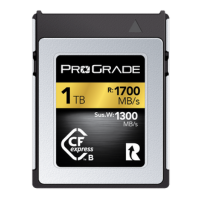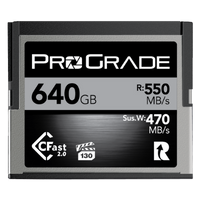In the ever-evolving world of digital media, memory cards play a crucial role in ensuring photographers, videographers, and tech enthusiasts can store and transfer their valuable data efficiently. With various formats available—such as SD, MicroSD, CFast, and CFexpress—understanding the differences and benefits of each type is essential for making informed purchasing decisions. This is particularly important in professional environments where performance, reliability, and speed can significantly impact workflow efficiency.
Choosing the right memory card for your needs involves more than just selecting the one with the highest capacity or speed rating. Factors such as device compatibility, durability, and the specific demands of your work must also be considered. In this guide, we will provide a comprehensive comparison of popular memory card formats, including the latest advancements in CFexpress technology. By examining technical specifications, performance benefits, and optimal use cases, we aim to help you make the best choice for your professional and personal needs.
SD and MicroSD Cards
Overview
SD (Secure Digital) and MicroSD cards are among the most commonly used memory card formats in consumer electronics. Known for their versatility and ease of use, these cards are prevalent in a wide range of devices, from digital cameras and smartphones to drones and gaming consoles. Standard SD cards are often used in larger devices like DSLRs and camcorders, while the smaller MicroSD cards are popular in compact devices such as smartphones and action cameras.
In this lineup, there is actually a third type of card as well: MiniSD. Many people are surprised to learn that MiniSD cards even exist. Developed as an intermediate size between standard SD and MicroSD cards, MiniSD was introduced to provide more storage in a smaller form factor for early mobile phones and other small electronics. However, as technology progressed and devices demanded even more compact storage solutions, MicroSD cards became the preferred choice. Since MiniSD cards did not offer significant benefits other than being smaller than standard SD cards, those who needed to go small opted for the smallest possible option, contributing to the obsolescence of MiniSD cards. Today, MiniSD cards are largely bygone and rarely used in modern electronics.
Performance
The performance of SD and MicroSD cards is fundamentally defined by the technology within the card. Despite their similar appearances, not all SD cards perform the same due to differences in their internal components and architecture. Key factors include the type of flash memory used, the quality of the memory controller, and the implementation of error correction algorithms.
For example, some SD cards use Single-Level Cell (SLC) memory, which stores one bit per cell. Others use Multi-Level Cell (MLC) memory, which stores two bits per cell, or Triple-Level Cell (TLC) memory, which stores three bits per cell. Additionally, the controllers that manage data read/write operations can vary significantly in quality and capability.
Navigating the Field
Different manufacturers advertise their cards’ performance differently. Some questionable brands even present speeds using multipliers like 667X or 1333X instead of listing exact speeds in MB/s. Others highlight peak speeds only achievable under ideal conditions, making determining a card’s actual performance difficult. In contrast, all ProGrade Digital SDXC memory cards clearly list both the read and write speeds in MB/s, ensuring transparency and allowing you to accurately gauge the card’s performance under typical usage conditions.
To help consumers navigate the wide array of available SD and MicroSD cards, standardized speed classes were created. These classes provide a way to compare cards based on their minimum guaranteed write speeds. Certified cards with specific speed class markings are guaranteed to maintain their minimum speed under all conditions for which they are certified and tested.
In addition to speed classes, SD cards also have bus interface markings on them, which refer to the bus interface technology used. Bus interfaces are marked on the cards with Roman numerals (I or II) and indicate the maximum speed at which a memory card is capable of transferring data. UHS-I cards can reach up to 104 MB/s, while UHS-II cards can reach up to 312 MB/s, thanks to an additional row of pins allowing faster data transfer.
Video Speed Class
The rising demand for higher video quality has driven the necessity for faster memory cards. To meet this demand, the SD Card Association has continually updated its speed class standards, evolving from Speed Class to Ultra High-Speed Class and, most recently, to Video Speed Class.
Today, the most relevant and reliable indicator of an SD card’s performance is the latter, the Video Speed Class. Older classes are becoming obsolete as they do not meet the demands of modern high-resolution video recording and high-speed photography.
Video Speed Class is marked on the card with the letter V followed by a number. This class includes V6, V10, V30, V60, and V90 ratings. These ratings guarantee minimum sustained write speeds of 6 MB/s, 10 MB/s, 30 MB/s, 60 MB/s, and 90 MB/s, respectively. These metrics are critical for ensuring smooth and consistent recording of high-bitrate videos, such as 4K and 6K, without dropped frames or buffering issues.
For detailed information on all speed classes, refer to our dedicated article here.
Perfect For
SD and MicroSD cards are ubiquitous in consumer electronics due to their flexibility and broad compatibility. These cards are used in a variety of devices, including digital cameras, smartphones, drones, gaming consoles, tablets, and laptops. Even the latest Apple Mac Studio computers feature dedicated SD card slots, allowing users to utilize these flash storage devices almost like external SSDs.
Digital cameras rely heavily on SD cards for storing high-resolution photos and videos. The speed and capacity of modern SD cards enable photographers to shoot in burst mode and record high-resolution video without worrying about storage limitations. Professional photographers appreciate the reliability and performance of SD cards, which ensure they can capture every moment with precision and clarity.
Meanwhile, MicroSD cards are the go-to memory cards for action cameras and drones, capturing high-quality aerial footage and images. Their compact size and fast read/write speeds are perfect for these applications, allowing for seamless recording even in demanding environments.
CFast Memory Cards
Overview
CFast cards are a more recent development in the evolution of CompactFlash technology, designed to meet the increasing demands of professional photographers and videographers. Introduced to provide faster data transfer rates and greater storage capacities, CFast cards are commonly used in high-end DSLRs, digital cinema cameras, and other professional-grade equipment. Unlike traditional CF (CompactFlash) cards, CFast cards utilize a SATA interface, enabling significantly higher read and write speeds.
Performance
CFast cards deliver exceptional performance due to their advanced technology and high-speed SATA interface. This allows for rapid data transfer rates, making them ideal for capturing high-resolution images and 4K or even 6K video. The use of high-quality NAND flash memory and sophisticated controllers ensures that these cards can handle the rigorous demands of professional use, including burst mode photography and extended video recording sessions.
Navigating the Field
Just as SD cards have speed class ratings to help consumers make informed decisions, CFast cards use Video Performance Guarantee (VPG) ratings. These standardized ratings indicate the card’s minimum sustained write speeds, which are critical for continuous data recording in video production. The VPG rating is shown on certified cards by the number inside a tiny clapperboard icon.
Minimum Sustained Write Speed
As of now, the highest Video Performance Guarantee (VPG) rating CFast memory cards can get certified for is VPG 130, which ensures that a card will not drop below 130 MB/s in sustained transfer speeds. Since ProGrade Digital CFast memory cards offer much greater write speeds, we started indicating the actual sustained write speed on the label of our CFast memory cards. This number may be lower than the peak write speed (achieved in ideal conditions) advertised by some other manufacturers; it is a much better indicator of what the card is actually capable of.
For example, the ProGrade Digital CFast Cobalt memory card has a VPG rating of 130 but an actual sustained write speed of 470 MB/s. That means almost four times as much data can be written continuously on the card every second than it is rated for. The sustained write speed is marked on ProGrade Digital memory cards as “Sus. W:” followed by a numerical value in Megabytes per second (MB/s), giving users a more precise understanding of the card’s performance capabilities under continuous high-demand usage.
Perfect For
CFast cards are ideal for professional photographers and videographers who require high performance and reliability. They are commonly used in high-end DSLRs and digital cinema cameras, where their high-speed capabilities support burst mode photography and high-resolution video recording.
CFexpress Memory Cards
Overview
CFexpress cards represent the latest evolution in memory card technology, designed to meet the growing demands of professional photographers and videographers. CFexpress cards come in different types, with Type A and Type B being the most commonly used. These cards are the successors of XQD cards, offering significantly enhanced performance and reliability.
CFexpress Type A memory cards are smaller and designed for compact cameras and devices, while CFexpress Type B memory cards are larger, making them suitable for high-end DSLRs and cinema cameras. Both types utilize the NVMe (Non-Volatile Memory Express) protocol over PCIe (Peripheral Component Interconnect Express) interfaces, providing substantial improvements in speed and efficiency compared to their predecessors.
If Speed Matters
CFexpress cards adhere to two standards: CFexpress 2.0 and 4.0. Both standards support Type A and Type B cards, delivering impressive speed and capacity improvements. To put that into perspective, compared to XQD cards that max out around 440 MB per second data transfer rates, ProGrade Digital CFexpress™ Type A 4.0 Iridium memory card can effortlessly sustain write speeds that are almost twice as fast. Furthermore, ProGrade Digital CFexpress™ Type A 4.0 Iridium memory cards can even sustain read speeds of 3,55GB per second and sustained write speed of up to 1450 MB per second.
Dedicated Memory Card Reader is a Must
To fully utilize the high-speed capabilities of CFexpress cards, it is essential to pair them with equally capable card readers. ProGrade Digital offers high-speed workflow readers that match the performance of CFexpress 2.0 and 4.0 memory cards.
For example, the PG05.6 Single-Slot CFexpress Type B Reader, utilizing the USB 4.0 interface, enables downloading content from CFexpress Type B cards at over 5,000 MB/s (5 GB/s), ensuring optimal performance without bottlenecks caused by slower readers.
Future of Memory Cards
The evolution of memory card technology is set to significantly impact professional photography and videography. Memory cards will continue to offer higher storage capacities and faster speeds to meet the growing demands of high-resolution content. This will enable professionals to capture more data without frequent card changes, enhancing productivity and efficiency.
CFexpress 4.0 is poised to become the new normal in the domain of CFexpress and CompactFlash cards. This advancement offers unparalleled speed and efficiency, particularly for handling demanding formats like 8K video and high-frame-rate burst photography. With CFexpress 4.0, workflows will be future-proofed, ensuring compatibility with the latest camera models and technological advancements.
The industry is also shifting towards more sustainable practices, with ProGrade Digital leading the way. Manufacturers are developing eco-friendly memory cards and packaging to reduce environmental impact, aligning with global sustainability goals.
Conclusion
As technology progresses, professionals who stay abreast of these trends and adopt new standards will be well-positioned to leverage the latest innovations for improved workflow efficiency and creative output. With groundbreaking advancements like CFexpress 4.0, the next-gen memory cards are set to redefine the standards of speed, capacity, and efficiency.
As a professional in photography or videography, embracing these innovations will empower you to capture and manage high-resolution content with unprecedented ease and reliability. By staying ahead of these technological trends, you ensure that your creative work remains at the cutting edge, supported by tools that enhance productivity and expand your creative possibilities. Embrace the future of memory technology, and let it propel your professional journey to new heights of excellence and innovation.





